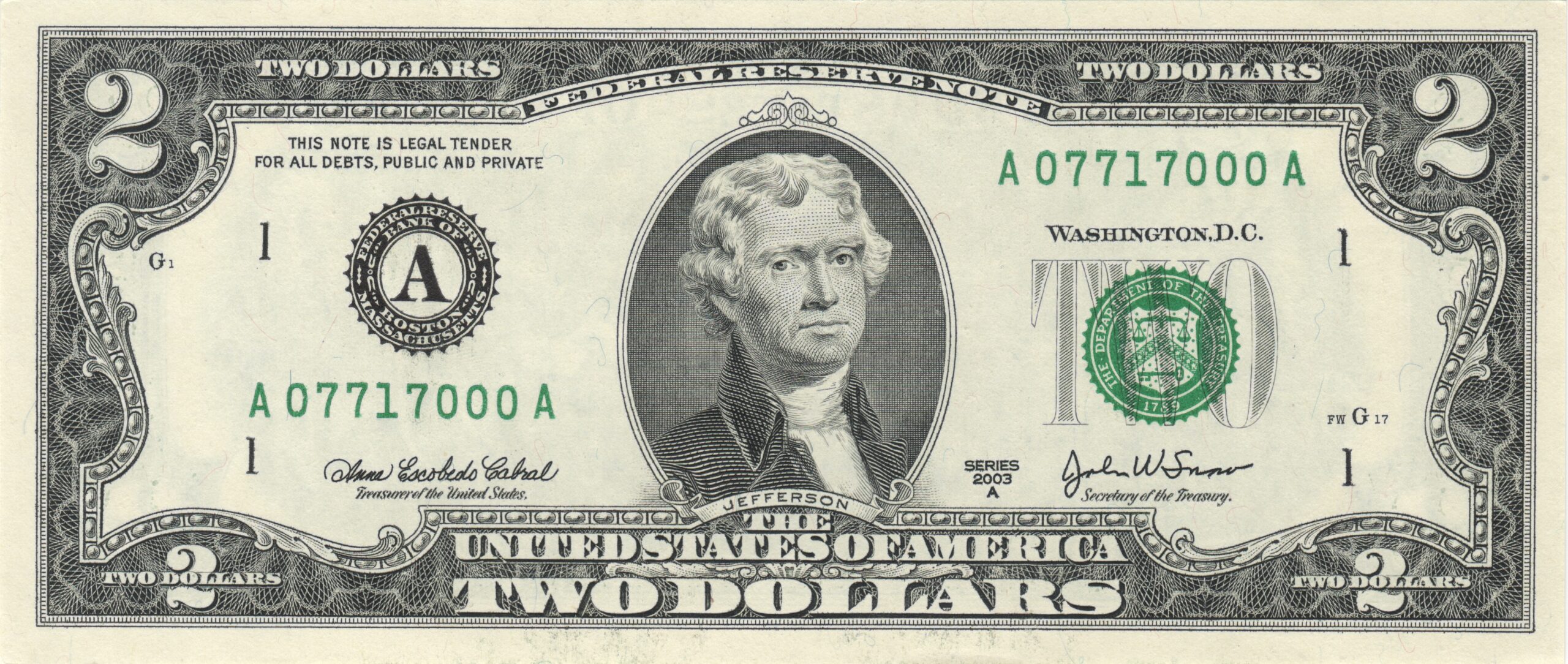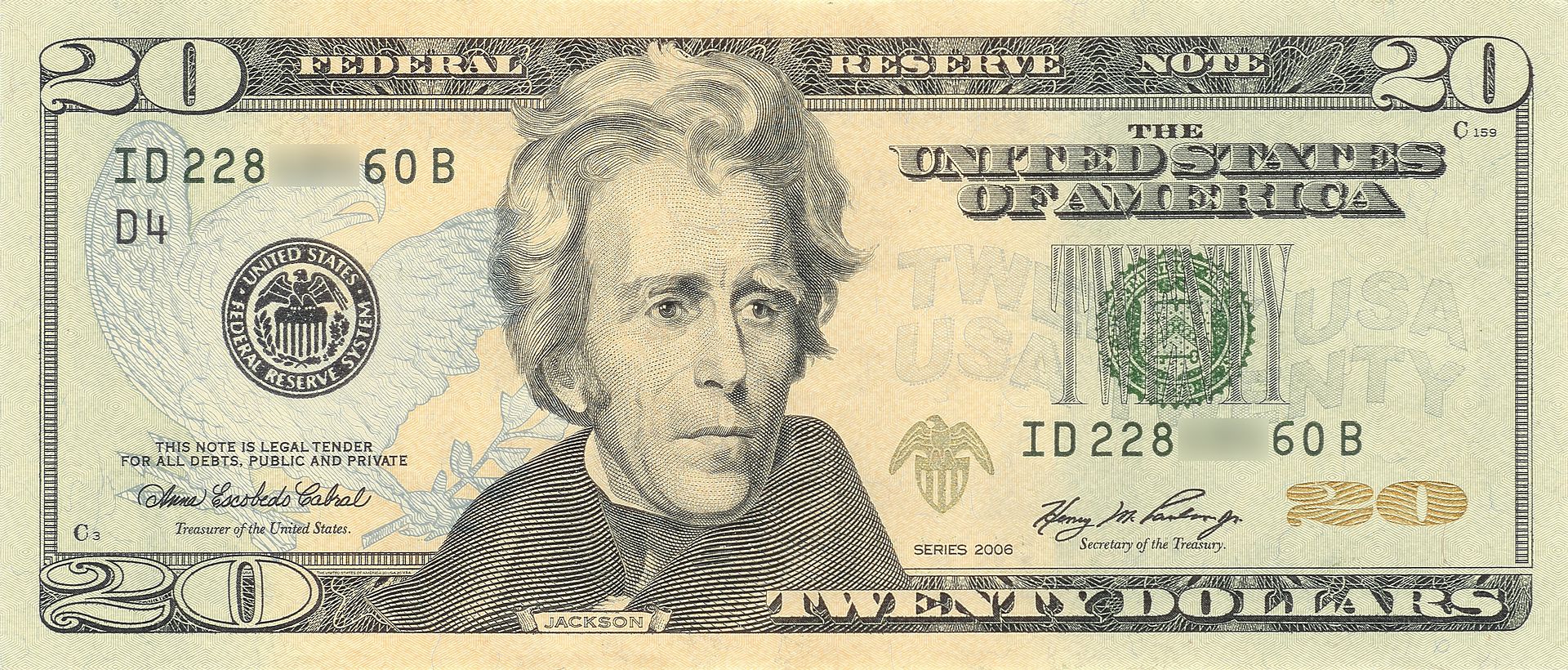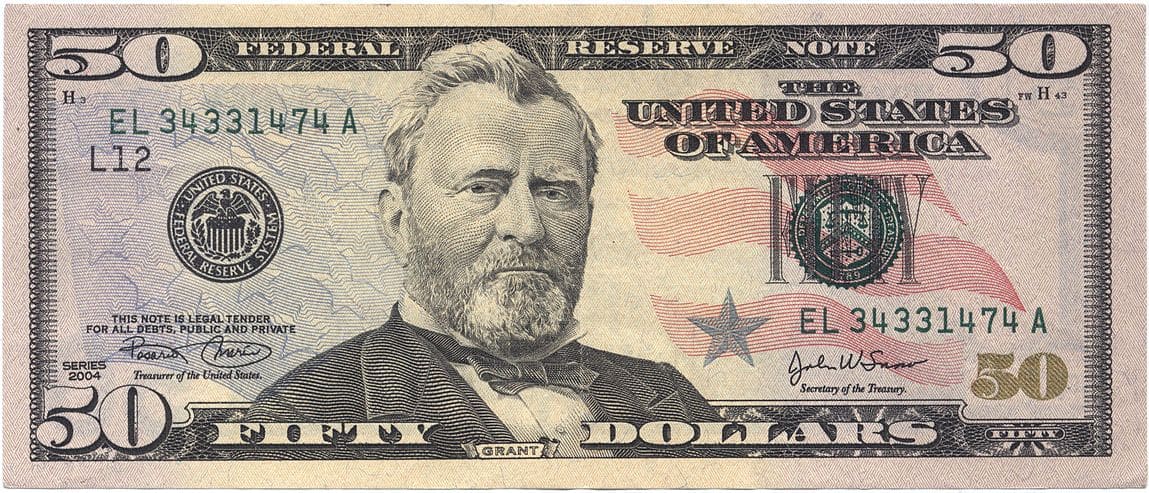Have you ever been curious about who the dead presidents on money are? While researching this article, I stumbled across currency that I did not even know existed.

Also, not all of the faces that show up on our money were Presidents.
Here is a quick overview of who appears on what.
Jump to:
Paper Money
The first category is paper money, and the first one is the easiest.
The $1 Dollar Bill
The $1 dollar bill has a picture of George Washington on it. It would make sense that he would be located on the most common bill used today.

The $2 Dollar Bill
The next one is less common, but most, if not all, should have seen this one.
The $2 Dollar Bill has a picture of Thomas Jefferson on it.
Many folks don't realize that the $2 dollar bill is still being printed and is much more common than many belief. This belief that it is rare has caused many to hoard and save them, believing that they will be worth more.
However, the $2 dollar bill is still only worth $2 dollars.

The $5 Dollar Bill
The $5 Dollar Bill has the face of Abraham Lincoln and is one of the more common notes in circulation.
Abraham Lincoln is the face on the note today but was not always the face on the $5 dollar bill. There is actually a long history of different people on the bill before Honest Abe.
Alexander Hamilton, Andrew Jackson, and Ulysses S. Grant all appeared on the $5 dollar bill in the 1800s before Lincoln.
By 1929, Lincoln had taken over the portrait, and it has not changed since.

The $10 Dollar Bill
The 10-dollar bill is the first note not to have a president's face on it, although many probably think he was a President.
Alexander Hamilton is on the 10-dollar bill, and he was the Secretary of the Treasury under George Washington and the main influence on what became the American economy.
The first 10-dollar bill had the face of Andrew Jackson on it but was changed to Alexander Hamilton in 1929, around the Great Depression.

The $20 Dollar Bill
Andrew Jackson first appeared on the $20 bill in 1928. Although 1928 coincides with the 100th anniversary of Jackson's election as president, it is not clear why the portrait on the bill was switched from Grover Cleveland to Jackson.
(Cleveland's portrait was moved to the new $1000 bill the same year). According to the U.S. Treasury: "Treasury Department records do not reveal the reason that portraits of these particular statesmen were chosen in preference to those of other persons of equal importance and prominence."
The placement of Jackson on the $20 bill may be a historical irony; as president, he vehemently opposed both the National Bank and paper money and made the goal of his administration the destruction of the National Bank.
In his farewell address to the nation, he cautioned the public about paper money.

The $50 Dollar Bill
The first person to appear on a 50-dollar bill was in 1863 when Alexander Hamilton was placed on it.
In 1869, a new dollar was issued with the portrait of Henry Clay on it. It is odd to think that Clay would ever be on a Federal note, but he was a staple in American politics for many decades.
A few others would appear on the $50 dollar bill. Well-known founder Benjamin Franklin appeared on it, as did Edward Everett and Silas Wright.
In 1913, Ulysses S. Grant was put on the note, and his face has remained on the bill for over 100 years.

The $100 Dollar Bill
The $100 dollar bill has been in circulation since 1861 and first appeared with the portrait of General Winfield Scott.
George Washington and Abraham Lincoln would appear on the bill, as would a lesser-known politician, Thomas Hart Benson.
In 1878, it would be James Monroe whose face would be plastered on the note.
In 1890, David G. Farragut would be placed on the bill and would stay until John J. Knox replaced him in 1902.
in 1914, Benjamin Franklin would appear on the $100 dollar bill, and that is who it remains to this day.

